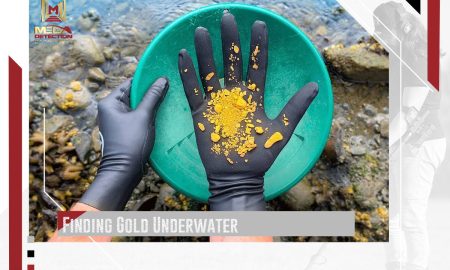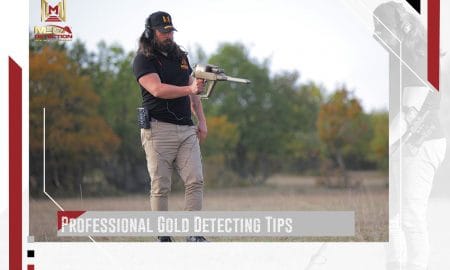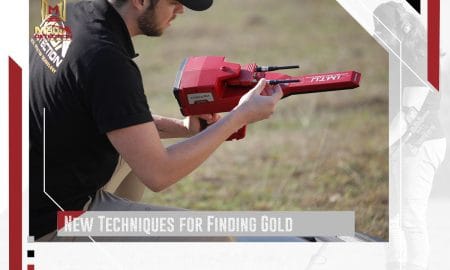Best Metal Detector 2022
Best Metal Detector 2022
The question we get asked more often than any other is, “What are the best metal detectors 2022 on the market today?”
Unfortunately, there’s not a simple answer to that question. There are many “best detectors 2022” because there are so many different types of metal detecting.
We’ve created this article to answer the question as completely as we can. Along the way, we will tell you about some of the various criteria you should consider when buying a metal detector, and we’ll give you some of the main factors to consider, depending on the type of metal detecting you plan to do.
Terminology & Definitions
Like every great hobby, metal detecting is an activity that is filled with special words that outsiders may have a hard time understanding. Here we will define some of the words you may not be very familiar with.
Metal detecting experts, feel free to skip ahead to the next section.
- Ferrous: Metals that contain iron. Non-ferrous metals are metals that are not magnetic, like brass, gold, silver, nickel, tin, and lead.
- Frequency: Frequencies vary on metal detectors and the different frequencies are used for different types of detecting. The frequencies are measured in Kilohertz and measure the number of magnetic fields sent to the ground. Different metals react to different frequencies based on the characteristics and conductivity of that metal.
- Mineralization: The amount of iron and salt in the ground. Examples of mineralized ground include black sand on beaches (from the iron), redness in the dirt (iron), and the salt in the sand on saltwater beaches.
- Interference: Anything with an electromagnetic field, like cell phones or power lines, can interfere with the detector’s signal.
- Control box: Contains the controls, speaker, batteries, and processor of a metal detector.
- Search coil: This is what “sees” the metal in the ground. Different search coil sizes and shapes perform differently. Generally speaking, smaller coils are most sensitive while larger coils can penetrate deeper underground.
- Discrimination: You can filter out different types of metal or objects by adjusting your settings.
- Ground balance: Adjustments made to the detector for different types of soil and mineralization.
- Target separation: How well a detector identifies targets that are close to one another.
How Do Metal Detectors Work?
A metal detector sends out a signal at a specific frequency into the area below the device’s plate, and any metallic objects nearby will provide feedback to the detector. This information translates into the detector emitting different sounds, which indicate different kinds of metal.
Modern metal detectors include a display on their control box to help you better interpret the sounds coming from the device and avoid digging up unwanted items. While not all displays feature the same information, they often provide details such as the general depth of items, their iron content, and their conductivity. Lower conductivity implies iron, while higher conductivity can signal more valuable metals such as silver or gold.
Other common features on metal detectors include: options to amplify or “mute” iron signals, so you can ignore or specifically identify objects with a high iron content; ground balancing, which helps you even out any signal interference from highly mineralized soil; and, in the case of some specialty gold detectors, discrimination settings that help eliminate interference from hot rocks and other metals and minerals that can be found nearby.
Most detectors can’t search past 8 inches of soil, due to the frequencies used being fairly low (7-18 kHZ). But some models used for gold prospecting (yes, there’s still gold in them hills!) can penetrate deeper. They use much higher frequencies to take advantage of gold’s highly conductive properties.
How to Get Started with Metal Detecting
Metal detecting is a fun hobby that nearly everyone can do. It doesn’t require a lot of heavy lifting (most detectors are very lightweight), and as long as you don’t mind doing some digging in the dirt, you’ll be all set. Of course, if you don’t want to get dirty, just bring a kid along with you – they will love digging with the possibility of finding something exciting.
Getting started with metal detecting is fairly easy. The first step is deciding on and purchasing a metal detector. There are many different machines to choose from and just as many different prices. Since you are just starting out, you may want to begin with a fairly inexpensive detector to get the hang of it. You also have to consider where and what you will be detecting. There are detectors that are suited specifically for gold nugget hunting, for example. Don’t be afraid to talk to the salespeople wherever you are shopping for your detector.
Once you have your metal detector, you will probably want to head outside and give it a spin, and that’s fine. Just be sure that before you spend too much time swinging it around, you take the time to read the user’s manual to get familiar with your machine. You will have the best metal detector 2022 results hunting when you understand how the detector works and how to use the settings.
Familiarize yourself with metal detecting etiquette and how to ask permission for hunting sites from property owners. These aspects of detecting are extremely important. If you are not a courteous detectorist, or if you hunt without obtaining permission, you could get yourself into some trouble. There are plenty of places online that talk about metal detecting etiquette and gaining permission – check some out.
The next step is all about practicing. Set up a test garden outside by burying various types of metal items at various depths. Then, practice swinging over those items, paying attention to the alerts your machine makes. Learning to differentiate the signals based on what type of metal and how deeply it’s buried is essential to having successful hunts in the future. Be sure that you include “trash” in your test garden like the soda can pop tops, foil gum wrappers, and the like because you will encounter a lot of that kind of thing when you hunt for real.
When you feel that you are ready to take your new detector out for your first hunting trip, you will need some other tools. Of course, you will need something to dig with. There are a lot of digging tools available. Consider the types of soils you will be digging in. If you live in an area where the ground is particularly hard, you will want a tool that can handle that. If you plan to detect areas with lots of grass, you will want to have a tool that can easily cut through the grassroots. Digging on beaches or in sandy areas will mean that you need a sand scoop. Wherever you decide to hunt, make sure that you have an appropriate digging tool.
You’ll also want to invest in a good pinpointer. While you don’t necessarily have to have one right away, using one will significantly cut down on your digging time and it will make it much easier to fill in the holes you dig. Pinpointers range in price from pretty inexpensive to quite pricey, and you can get regular ones or waterproof ones for pinpointing targets in shallow water.












Leave a Reply